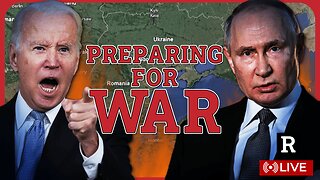The Banking Crisis is Not Over - Will First Republic be the NEXT Bank to Collapse?
The second and third largest bank failures in US history happened earlier this year. These events raised concerns about the potential contagion and systemic risks that could result from such failures, particularly in a highly interconnected financial system.
The Federal Reserve and US Treasury, along with other central banks and governments, stepped in to provide support and backstop customer deposits, which helped to calm fears and prevent the spread of the crisis.
However, there are still ongoing concerns about the health of some financial institutions and the potential for further disruptions in the banking sector. The Federal Reserve and US Treasury, along with other countries' central banks and treasuries, took measures to ensure that customer deposits in failing banks were backed up and protected. This was done to prevent a run on the banks and to reassure citizens that their money was safe. The actions taken were seen by many as necessary to stabilize the banking system and prevent a larger financial crisis. The government did not save equity or debt investors in these banks. This is exactly how capitalism should work. The risk-takers were wiped out for making a bad bet. The average citizen was protected and all is well in the world, right?
Not exactly. There were a number of banks that did not require the government to save them and their depositors, but remain in a really bad situation. Take First Republic Bank (FRB) as an example. The stock price plummeted and customers withdrew billions of dollars as they watched Silicon Valley Bank fail. The largest banks in the country stepped in to contribute around $30 billion in deposits to FRB in an attempt to strengthen the prospects of survival. Crisis averted for the time being. But we are right back where we started in recent days. The bank’s stock is down more than 90% year-to-date and it fell by around 50% just yesterday after a disappointing report, which highlighted a 40% drop in customer deposits in Q1. Simply, First Republic Bank is not out of the woods and it is on the brink of collapse. If First Republic Bank were to fail, it would indeed be a significant event and would add to the list of large bank failures in US history. The possible failure of First Republic Bank deserves attention as it emphasizes the persistent issue faced by financial institutions globally.
These organizations still have a significant amount of debt that is worth less than its original value. As a result, the mark-to-market losses could lead to insolvency for many of them. One potential solution to this ongoing problem for financial institutions holding large amounts of underwater debt is for the government to intervene and provide support.
This could take several forms, such as manipulating accounting rules or printing more money. While the former may not be a viable option, I anticipate that the government will resort to printing more money in the next 12 months to provide assistance and prevent bank failures while protecting depositors.
The ongoing crisis in the banking sector is not limited to private banks. Central banks, such as the one in Argentina, are also under severe stress, with inflation exceeding 100% in the past year, and interest rates reaching an astonishing 81%. Citizens who hold pesos have seen half of their purchasing power eroded, resulting in a significant loss of savings. Moody's recent downgrade of 11 regional banks is further evidence of the ongoing crisis, despite the attempts of bank leaders to downplay it.
Although catastrophic failure is not inevitable, it is a dangerous situation, and the banking sector is still undergoing a test that may result in significant changes. The government and central bank are motivated to protect depositors and prevent a bank run, but their options are limited.
Thus, the printing of more money is likely in the next 12 months to provide liquidity to markets. The question remains, will the current level of pain be enough for the Fed to act, or will they require more before intervening?
-
 2:20:35
2:20:35
WeAreChange
6 hours agoPfizer SUED For Misleading Covid Vaccine Marketing!
45.6K28 -
 50:37
50:37
Edge of Wonder
9 hours agoGobekli Tepe: Evidence Found that Proves Noah’s Flood is Real
24.7K11 -
 1:25:59
1:25:59
TheMonicaCrowleyPodcast
9 hours agoThe Unseen Power Plays of the Left
40.2K16 -
 LIVE
LIVE
Right Side Broadcasting Network
3 days agoLIVE REPLAY: President Trump Delivers Remarks in Racine, Wisconsin - 6/18/24
4,723 watching -
 1:19:25
1:19:25
Redacted News
8 hours agoBREAKING! NATO & Russia are 3 MONTHS away from FULL WAR, Serbia and Hungary warn | Redacted Live
126K226 -
 2:17:41
2:17:41
Tucker Carlson
8 hours agoGlenn Greenwald: Antisemitism, Attacks on Free Speech, and Everything You Need to Know about Brazil
173K424 -
 1:15:05
1:15:05
The Big Mig™
1 day agoNASA Exposed w/ NASA Expert Bart Sibrel
20.8K13 -
 1:28:39
1:28:39
Battleground with Sean Parnell
9 hours agoExposing J6 w/ Brian Lupo & Alfredo Luna
44.3K38 -
 2:01:21
2:01:21
Revenge of the Cis
8 hours agoEpisode 1340: Filler Up
51.7K12 -
 1:41:12
1:41:12
Michael Franzese
8 hours agoWhat's in the mind of a MASTER con artist? | Sitdown with Matthew Cox
46.5K43